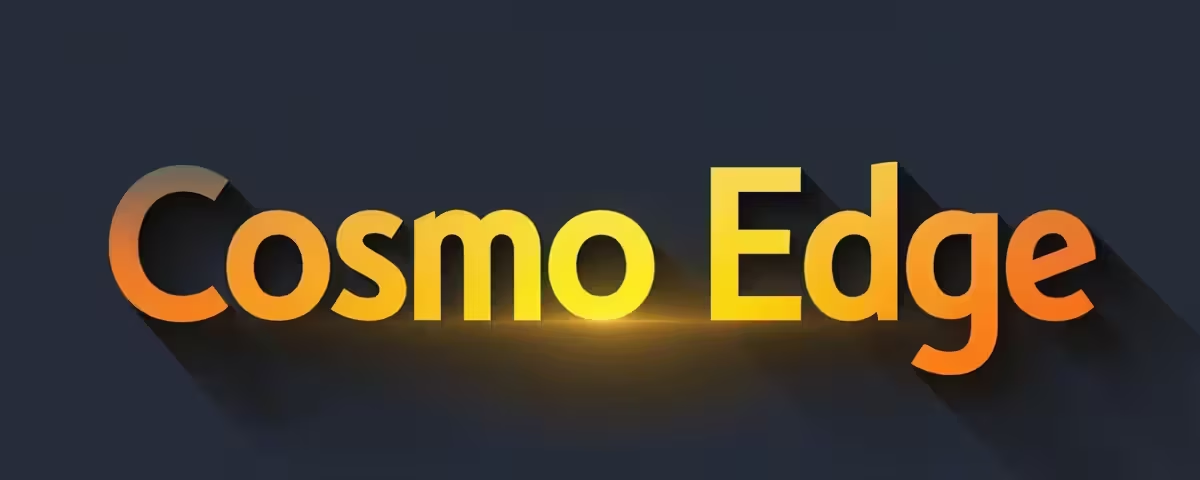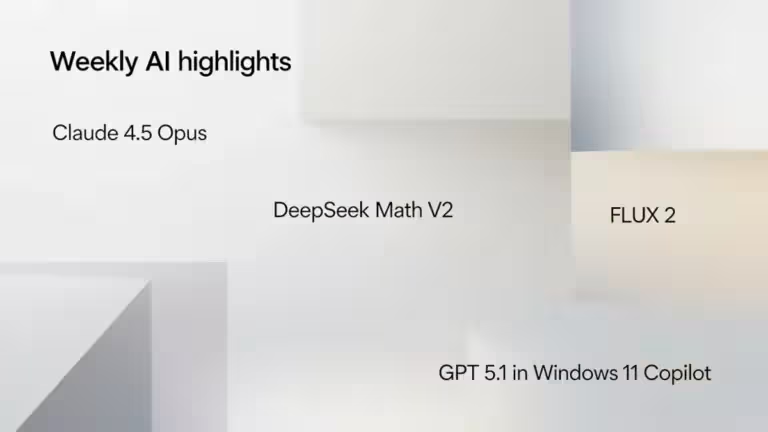Vibe Coding vs Spec Driven: What is the difference and what is the future of AI development?

From Vibe Coding to Spec Driven, two visions of AI-assisted development are shaping the way software is created. Since the arrival of the first AI code generation tools, a new approach to building applications has emerged: vibe coding. The idea is simple and attractive: chain simple iterative prompts, watch the AI generate code almost in real time, and quickly obtain a working prototype. This method has attracted many curious developers who can build entire applications in a few hours using Claude Code, Cursor or other AI coding assistants.
But the limits appeared quickly: lack of clear architecture, inconsistent code style, verbose outputs, and poor maintainability. These improvised projects often run into coherence and security issues as they grow. While Vibe Coding works well for simple projects or prototyping, for more complex applications or enterprise environments it shows its limits.
This is where a new methodology has emerged: Spec Driven Development. Instead of relying on improvised prompts, it structures the workflow with documents: detailed specifications, user stories, acceptance criteria, technical diagrams, and task lists. The AI then uses these as a guide to generate, test, and maintain the code. Amazon launched Kiro in July 2025, an agentic IDE based on this approach, with the ambition to transform how developers move from prototypes to production-ready products.
Behind these two visions are two philosophies of AI software development: the fast and creative experimentation of Vibe Coding versus the structured methodology of Spec Driven. Which one will dominate in the coming years? Can Spec Driven AI fix the shortcomings of Vibe Coding?
1. What is Vibe Coding? Definition and workflow
The term Vibe Coding appeared in the developer community to describe an intuitive and improvised way of coding with AI. Instead of writing a full architecture or a detailed specification document, developers feed agents like Claude Code, Windsurf, or Cursor with a sequence of prompts describing the desired functionality. The AI then generates the code, which is tested, adjusted, and refined through iterations.
This approach is attractive because of its speed. Some developers create a full application in just a few days, without detailed technical planning, simply “vibing” with the AI. For many engineers, it is an exciting way to experiment, explore ideas, or build a prototype without the burden of heavy methodologies.
Vibe Coding rests on three pillars:
- Successive prompts that progressively define requirements.
- Rapid iterations where code is generated, tested, and fixed.
- Low structural constraints, enabling freedom and creativity.
However, this freedom comes at a cost. Many developers note that code produced through Vibe Coding is often verbose, stylistically inconsistent, and hard to maintain, especially in team projects or long-term evolution. Without a robust test suite, each new feature risks introducing regressions into the existing system.
In short, Vibe Coding is effective for rapid prototyping and testing ideas, but its limits appear when it comes to building a long-term maintainable product. That is exactly where Spec Driven Development comes in, promising structure and reliability in AI software engineering.
2. What is Spec Driven Development? Definition and methodology
Spec Driven Development is a structured alternative to Vibe Coding. The central idea is simple: specifications become the heart of the process. The AI is no longer just a code generator, but a tool that relies on specifications to orchestrate the entire development lifecycle. This is closer to classical enterprise project management.
With Spec Driven Development, the AI is also used to transform a natural language request into a consistent set of documents: user stories, acceptance criteria, technical design, and an ordered task plan. This approach follows three key stages:
- Writing detailed specifications
From a simple prompt, for example “add a rating and review system on a product”, the AI generates complete user stories, each with explicit acceptance criteria (EARS syntax). This removes ambiguity and ensures coverage of all use cases. - Creating a technical design based on the specs
The AI produces a technical document with flow diagrams, interfaces, database schemas, and API endpoints. This step reduces misunderstandings that typically slow down Vibe Coding projects. - Generating and sequencing tasks
Each feature is broken into atomic tasks, with dependencies, unit tests, continuous integration, and accessibility requirements. Developers can execute these tasks step by step while ensuring compliance.
One of the most important points is the continuous synchronization between specs and code. If the developer modifies the code, the AI updates the specifications, avoiding the classic gap between documentation and the real state of the project. This ensures maintainability whether by humans or AI.
Spec Driven as a methodology and its tools
Spec Driven is a methodology, and while specialized tools exist like Amazon Kiro, they are not mandatory. Open source initiatives such as Spec Kit or protocols like MCP (Model Context Protocol) push in the same direction: making specifications the “living contract” that governs the project.
In short, Spec Driven promotes a methodology where documentation rigor becomes an asset: every decision is logged, every task is linked to a requirement, and code is only an “expression” of the specifications. When requirements change, it is enough to update the reference document and the AI adjusts everything else. Human validation, correction, and testing remain critical for success.
Development phases
| Phase | Goal | Key activities |
|---|---|---|
| Day 0 to Day 1 Development | Generate from scratch | – Start with high-level requirements- Generate specifications- Plan implementation steps- Build production-ready applications |
| Creative exploration | Parallel implementations | – Explore diverse solutions- Support multiple tech stacks and architectures- Experiment with UX models |
| Iterative enhancement | Brownfield modernization | – Add features iteratively- Modernize legacy systems- Adapt processes |
3. Vibe Coding vs Spec Driven: comparing the two methodologies
These two approaches do not aim for the same goals. Vibe Coding focuses on spontaneity and speed, while Spec Driven seeks clarity, traceability, and rigor in AI software development. Developer experiences highlight the contrast: some claim they built apps in a few hours with Vibe Coding, while others using Spec Driven saw AI produce robust, maintainable, and fully tested code. For simple, low-stakes projects, Spec Driven may feel oversized.
To make the comparison clearer, here is a summary table:
| Criteria | Vibe Coding | Spec Driven |
|---|---|---|
| Philosophy | Improvisation, creativity, speed. Experiment, test, code “by feeling” with AI. | Rigor, planning, traceability. Structure from the start with detailed specifications. |
| Starting point | Successive prompts, often vague, focused on “what I want to see working”. | Precise specifications: user stories, acceptance criteria, technical design, architecture diagrams. |
| Code quality | Often verbose, inconsistent, hard to maintain. Strongly depends on prompts. | Code aligned with documented architecture, more standardized, with automatically generated tests. |
| Documentation | Almost none: knowledge is trapped in prompts history and the developer’s memory. | Living documentation: specs stay synchronized with code, avoiding classic gaps. |
| Tests | Often missing or added later. High risk of regressions with new features. | Unit and integration tests generated for each task, continuous verification of compliance. |
| Developer experience | Feeling of freedom and creativity. Great for learning or quick experimentation. | Closer to project management: the developer becomes an architect and supervises AI. |
| Initial speed | Very fast: a prototype can be delivered in hours. | Slower at the start: writing specs takes time, sometimes up to 50% of the project effort. |
| Scalability | Struggles with complex or collaborative projects, high technical debt. | Built to scale: easier feature additions, refactoring, or legacy modernization. |
| Ideal use cases | Prototyping, proof of concept, personal projects, hackathons. | Critical applications, team projects, complex or large-scale systems. |
| Limitations | Lack of maintainability, missing architecture, security often ignored. | Can feel rigid, risk of over-engineering, quality depends on tools. |
This opposition does not mean one is absolutely better than the other. Vibe Coding moves quickly at first but struggles as the project grows. Spec Driven requires more upfront investment in writing specifications, but provides a solid foundation for scaling and long-term maintainability.
In practice, many developers start with Vibe Coding to test an idea, then migrate to a Spec Driven workflow once they aim for production. This complementarity also reflects a shift in the developer’s role: from prompt coder to specification architect and AI project lead.
4. The promises of Spec Driven Development
The main argument in favor of Spec Driven is maintainability. In many projects, initial specifications quickly become outdated: they are not updated and lose relevance. With Spec Driven, specifications remain synchronized with code, drastically reducing the gap between documentation and the actual project state.
This synchronization brings several concrete advantages:
- Fewer errors and regressions
Each feature is tied to clear acceptance criteria and a set of automatically generated tests. The risk of breaking existing features when adding new ones is much lower. - Security and compliance by design
One of the strengths of Spec Driven is integrating security rules, compliance, and technical constraints from the start. This prevents these critical aspects from being handled later, which often leads to vulnerabilities. - Standardization of practices
By generating consistent architecture diagrams, interfaces, and database schemas, AI enforces homogeneity across the project. This consistency makes onboarding new developers easier and reduces the risk of unmaintainable “spaghetti code”, often blamed on Vibe Coding. - Easier evolution and refactoring
In a spec first approach, it is enough to modify the specification, and the AI regenerates or refactors the corresponding code. As GitHub shows in its introduction to Spec Kit, this accelerates changes even in complex or legacy systems.
In practice, Spec Driven is not only a methodology, it is also built-in quality assurance. It makes code more transparent, traceable, and durable, while reducing the cognitive load of developers who no longer have to juggle improvised prompts and endless corrections.
For many, this represents a natural evolution: after the era of prompt coding comes the era of spec coding, where engineers focus on being guardians of clarity and quality specifications.
5. The limits of Spec Driven: costs and rigidity
While Spec Driven attracts attention, it is not flawless. The first criticism is the time and effort required to write detailed specifications. Creating the architecture.md file that serves as a foundation for AI can represent a significant share of the total project time. This initial investment can feel disproportionate when the goal is speed or testing a simple idea.
Another issue is over-engineering. A developer experimenting with Kiro reported on Hacker News that after giving a short prompt for a simple feature, the tool generated nearly 5000 lines of code including tests, while a manual solution needed only 800. The result worked perfectly, but was unnecessarily complex for a minimal use case. This tendency to formalize everything can slow development and make AI look like it is doing “too much”. This can be mitigated by instructing the AI what to exclude or where not to over-engineer. Here, the experience of the developer or software architect becomes a real asset.
There is also methodological rigidity. Spec Driven assumes planning and documenting everything before implementation. In innovative projects, requirements change rapidly and it can be difficult to lock in exhaustive specs from the start. Even if tools allow continuous updates, it remains an extra constraint.
Finally, some raise the issue of dependence on proprietary tools. Amazon Kiro is closed-source, paid software that relies on Anthropic’s Claude models. This raises questions about technological sovereignty and long-term costs for enterprises that standardize their development pipeline with such tools. However, there are open source alternatives such as GitHub Spec Kit and OpenSpec.
In summary, Spec Driven is not a universal solution. It shines in complex enterprise environments, but can be heavy, costly, and oversized for small or experimental projects.
6. Hybrid approaches: from Vibe Coding to Spec Driven
In practice, very few teams stick strictly to one methodology. What emerges instead is a hybrid approach: Vibe Coding serves as a springboard to kickstart a project, then Spec Driven takes over as it matures. As is common in enterprise adoption, these practices are implemented carefully.
Vibe Coding allows quick experimentation and idea validation, while creating an architecture.md file later gives the project a backbone. Once this document exists, the application can be industrialized with clear tasks and a scalable architecture.
This combination addresses reality:
- Vibe Coding excels during ideation, proof of concept, and hackathons, where the goal is to test hypotheses fast.
- Spec Driven becomes essential in production environments, where stability, security, and maintainability matter most.
Tools like Amazon Kiro or Spec Kit are already designed to integrate both dimensions. For example, Kiro can be used like a traditional AI IDE to code with prompts, but its main advantage is switching into spec mode, where everything is documented, synchronized, and verifiable.
This hybrid model also redefines the developer’s role. At first, the developer acts as an explorer, testing AI’s capabilities and validating ideas. Then gradually, the role evolves into that of an architect and guarantor of coherence, ensuring the project remains sustainable.
In short, the question is not whether to choose Vibe Coding or Spec Driven, but when to switch from one to the other, depending on the project’s nature and maturity.
7. The future of AI development: what role for Spec Driven?
The rise of agentic IDEs like Amazon Kiro, Claude Code, OpenAI Codex, and Cursor suggests a future where the developer’s role will be deeply transformed. Many engineers already report feeling more like project managers than coders when working with Kiro. AI handles writing tasks and producing tests, while humans guide, validate, and adjust.
Spec Driven pushes this further: the developer becomes a specification architect, responsible for functional and technical choices. Code is no longer the raw material, but the result of a process orchestrated by AI, “a simple expression of the specification”.
This shift opens new perspectives:
- Unification of the project cycle: boundaries between product manager, architect, and developer blur, with AI as the executor.
- Acceleration of development cycles: once specs are defined, AI can generate or refactor entire systems in a few iterations, challenging traditional Agile sprint logic.
- Evolution of the developer role: the key skill is no longer “coding fast” but defining precise requirements, formalizing architectures, and planning long-term. Requirement analysis, specification writing, and change management have already been critical in enterprises for years.
That said, Spec Driven is not a silver bullet. Developers still need to learn to “pilot” AI, remind it not to bypass problems, and accept that agents may get lost in complexity. The future of AI-assisted development will likely be a coexistence between spontaneity and structure, where Vibe Coding continues to exist for exploration and prototyping, while Spec Driven dominates industrialization.
In the end, AI does not replace developers, it reshapes their role. Tomorrow, the priority will be designing and structuring rather than manually coding. Experienced engineers will be key to guiding these systems. At the same time, the demand for junior developers has already dropped significantly, raising an open question: if AI handles the first lines of code, who will train the next generation of developers?
8. FAQ – Common questions about Spec Driven and Vibe Coding
What is Vibe Coding?
Vibe Coding is an AI development method based on successive prompts and rapid iterations. It allows developers to quickly create functional prototypes. It is ideal for testing an idea or building a proof of concept (POC), but it often lacks rigor and maintainability.
What is Spec Driven Development?
Spec Driven starts development with detailed specifications: user stories, acceptance criteria, and technical diagrams. These documents act as a contract between developers and AI. Tools automate task generation and keep specs synchronized with the code.
What is the difference between Vibe Coding and Spec Driven?
Vibe Coding focuses on speed and creativity, while Spec Driven emphasizes rigor and traceability. The first suits prototyping, the second suits production or critical projects.
What are the benefits of Spec Driven?
This approach ensures better maintainability, reduces errors, integrates security and compliance from the start, and makes teamwork easier. GitHub, with its Spec Kit tool, highlights Spec Driven’s ability to accelerate complex projects while keeping documentation always up to date.
Is Vibe Coding suitable for professional projects?
Yes, but with limits. For prototypes or personal projects, Vibe Coding is very efficient. For enterprise or critical applications, it creates risks of technical debt, regressions, and lack of documentation.
Is Amazon Kiro open source?
No. Kiro is a proprietary fork of VS Code developed by Amazon, using Anthropic’s Claude models. It works with Open VSX plugins but is paid software after the free trial.
Conclusion
The debate between Vibe Coding and Spec Driven illustrates the ongoing transformation of software development in the AI era. Vibe Coding, with its speed and simplicity, opened new possibilities for experimenting, prototyping, and testing ideas in record time. It attracted a generation of developers who could build functional applications by chaining prompts, without heavy methodologies.
But this freedom has downsides: lack of consistency, technical debt, missing tests, and poor documentation. Spec Driven emerged as a structured response. By placing specifications at the center, it brings rigor, maintainability, and transparency, as shown by Amazon Kiro and open source initiatives. Code becomes only an expression of the specification, with AI acting as a disciplined executor instead of an improviser.
Should the two approaches be opposed? Probably not. The future of AI development will likely be hybrid: Vibe Coding will continue to shine for exploration and prototyping, while Spec Driven will take over for industrialization and long-term sustainability.
Beyond this opposition, the developer’s role itself is evolving. No longer a craftsman of code line by line, the developer becomes a specification architect, a guarantor of clarity, coherence, and quality. With Spec Driven, the developer often takes on the role of technical project manager. For years the key skill has not been “coding fast” but “thinking right”. Now with AI, a new requirement emerges: the ability to formalize precisely what the machine should produce, turning vision into executable instructions. This capacity to guide and pilot AI is the core skill now being built.
Your comments enrich our articles, so don’t hesitate to share your thoughts! Sharing on social media helps us a lot. Thank you for your support!






